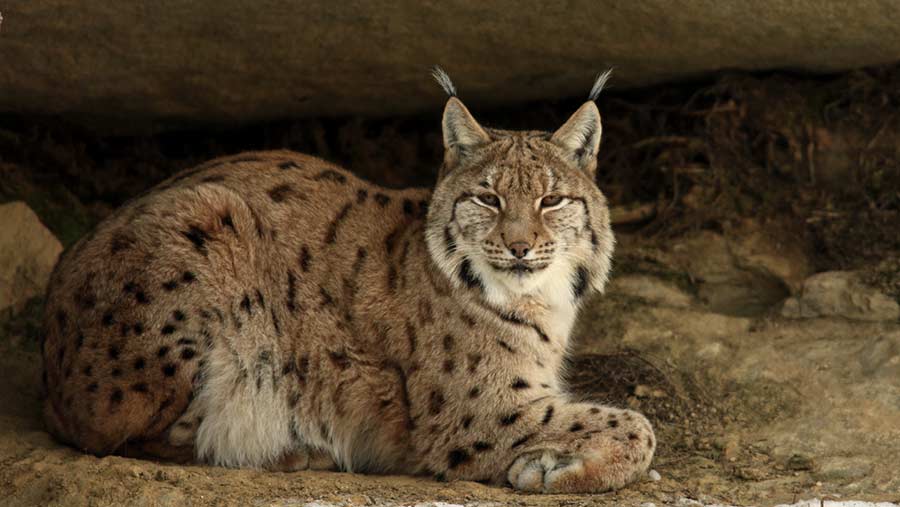Lynx reintroduction would be ‘final straw’ for sheep farmers
 © Hannu Hautala/FLPA / imageBROKER/REX/Shutterstock
© Hannu Hautala/FLPA / imageBROKER/REX/Shutterstock Reintroducing the Eurasian lynx to the UK would be the final straw for many sheep farmers, the National Sheep Association (NSA) is warning.
Launching its report, The wider consequences of the introduction of Eurasian lynx to the UK, it said debate has focused largely on the potential positives of such a move, but has overlooked the limited success of similar projects and underestimated levels of related compensation.
With conditions in the sector tough and returns low, the reintroduction of the lynx in the UK “would be the final straw” for many sheep farmers, Phil Stocker, chief executive, NSA, told a stakeholder meeting at the Farmers Club in London last week.
“We would lose much, much more than just sheep if these businesses cease to operate,” he said.
Lynx Trust UK, which first proposed the move in 2015, plans to apply for a license this year to trial the reintroduction of the wild cat in England and/or Scotland.
At 90-110cm in length and 60-70m in height, the Eurasian lynx, which thought to have been extinct in the UK and Ireland for 1,300 years, is the third largest predator in Europe after the brown bear and wolf.
An initial trial period of five years would see four to six released at three sites in Aberdeenshire, Northumberland, Cumbria or Norfolk.
See also: Public support lynx countryside release, says trust
But the NSA has criticised the proposal.
“The NSA has a number of concerns about this project, not just because of the anticipated predation on sheep,” says the report.
“The effect lynx would have on sheep are completely unjustifiable when farmers already work tirelessly for the welfare and performance of their livestock, and also to maintain their own livelihood. Sheep play an important role in maintaining the biodiversity of the current, perfectly functioning ecosystem, which would be disrupted by the introduction of an unnecessary predator.”
Its reasons for opposing the trial include:
- Lynx will likely take sheep
- Compensation will not make sheep mortalities acceptable
- Previous reintroductions have been problematic
- Suggested migration measures are not practical
- Engagement with the agricultural sector has been lacking
See also: 600 sheep killed in dog attacks over past three months
Sybil Macpherson, NSA Scottish region chairman and star of the hit series This Farming Life, added that reintroducing the lynx to Scotland could be particularly detrimental to Scottish hill flocks, which already face the threat of sea eagles.
“It is already difficult to maintain those vital sheep numbers due to predation by sea eagles, and I make a plea today to the powers that be for them to put more consideration into granting a license to release the lynx than they did with the management of sea eagles,” she said.
“Sea eagles have meant the end of profitability for many sheep farmers – add lynx to equation and the land will become an unmanaged wilderness that is no use to man or beast, domesticated or wild,” she added.
Swedish perspective
Tomas Olsson, a sheep farmer from Sweden – home to about 1,500 lynxes – told the meeting that between 50,000 and 60,000 sheep are taken every year by the wild cat.
“In the beginning you just lose some sheep and you don’t know why, but then you find more and more dead and not even eaten,” said Mr Olsson.
“It’s the pressure of living with it. You wake up every morning, go outside and find dead sheep that you spent so much time improving through your breeding programme and caring for through lambing time – just in order to feed the lynx.”
Mr Olsson added that the UK’s network of hedges “would be perfect for the lynx to hunt from.”
He also rubbished suggestions that reintroducing the Eurasian lynx to the UK would create new tourism opportunities.
“What tourism can you make from lynx? You do not see them,” he said.
